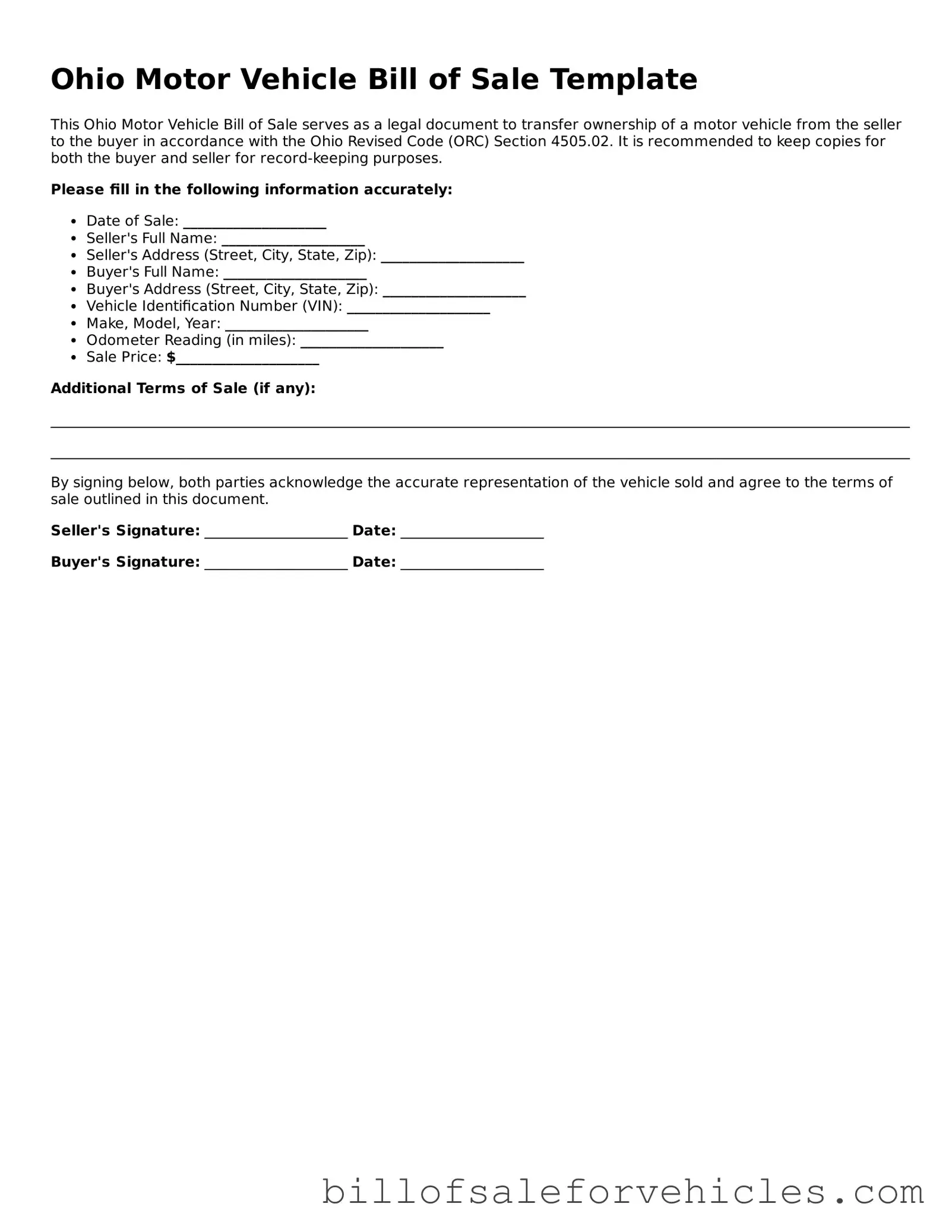What is an Ohio Motor Vehicle Bill of Sale?
An Ohio Motor Vehicle Bill of Sale is a legal document that records the sale and transfer of ownership of a motor vehicle from the seller to the buyer in the state of Ohio. It serves as proof of transaction and includes details such as the vehicle’s make, model, year, and VIN, as well as the names and signatures of both the buyer and seller.
Is an Ohio Motor Vehicle Bill of Sale required for the sale of a vehicle?
Yes, while Ohio law may not always require a bill of sale for every vehicle transaction, having one is highly recommended. It provides a written record of the sale, which can be useful for both legal protection and personal record-keeping. For registration and title transfer purposes, additional documents may be required by the Ohio Bureau of Motor Vehicles (BMV).
What information is needed on an Ohio Motor Vehicle Bill of Sale?
The document should include the date of sale, purchase price, names and addresses of both the buyer and seller, and a detailed description of the vehicle (including make, model, year, and VIN). Both parties should also sign and date the bill of sale to validate the document.
How does one obtain an Ohio Motor Vehicle Bill of Sale?
One can obtain a template from the Ohio BMV website or create a document that includes all the necessary information as described above. Additionally, various online resources and legal services offer customizable templates that comply with Ohio law.
Does an Ohio Motor Vehicle Bill of Sale need to be notarized?
No, an Ohio Motor Vehicle Bill of Sale does not need to be notarized. However, both the buyer and seller must ensure the document is completed in full and signed by both parties. Notarization can add an extra layer of authenticity to the document but is not required by Ohio law.
What are the next steps after completing a Bill of Sale in Ohio?
After completing a Bill of Sale, the buyer needs to present the document, along with any other necessary documents, to the Ohio BMV for the title transfer and vehicle registration process. It's advisable for the buyer to also obtain insurance for the vehicle prior to registration. The seller should keep a copy of the Bill of Sale for their records.
Can a Bill of Sale be used to dispute a sale in Ohio?
Yes, a Bill of Sale can be an essential piece of evidence if any disputes arise regarding the vehicle’s sale. It serves as proof of the transaction details, including the terms of sale and purchase price. As such, it is important to ensure that all information provided in the Bill of Sale is accurate and complete.
